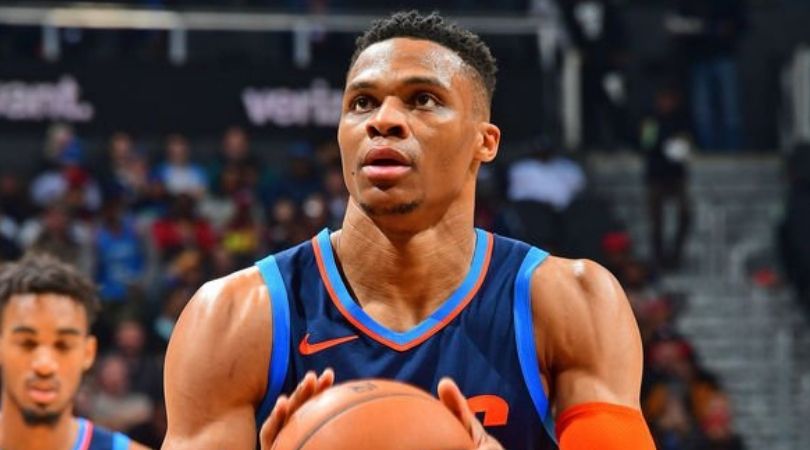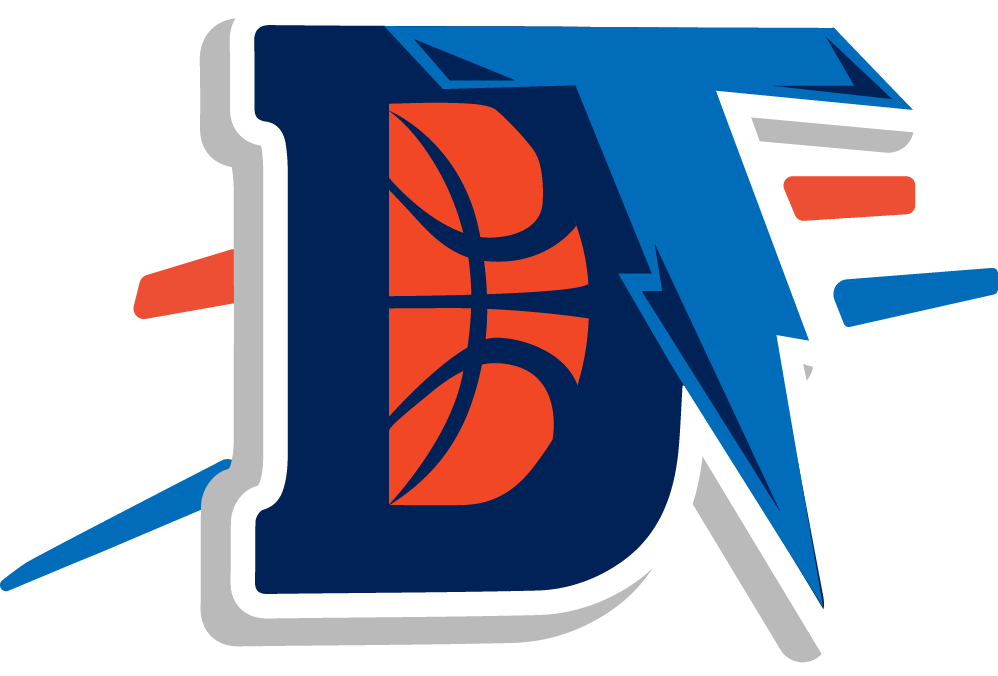What’s Going On?

With last night’s 138-128 overtime loss the Lakers, Thunder fans everywhere have begun violently mashing their “panic” buttons — and based on how things have looked recently, that’s certainly understandable. Oklahoma City has lost five of their last six games, gone 4-6 over the last 10, and only hold third-place in the Western Conference due to owning the tie-breaker with fourth-placed Portland. Carrying a once-dominant defense that has begun hemorrhaging points and a former MVP that can’t get a shot to fall, it’s only right to be concerned.
The question is — what’s going on?
What Happened to the Defense?
The Thunder established defensive dominance in the early part of the season, suffocating opposing offenses and terrorizing them with length and an uncanny ability to force turnovers. The season as a whole still looks good — OKC is second in defensive rating at 104.0 and seventh in net rating with +4.5. However, things have taken a dramatic turn during the 1-5 stretch over the last six games.
Starting with the loss to Washington on January 6, the Thunder defense has been blown apart in just about every facet. Teams are averaging 130.2 PPG against OKC over the span, hitting an average of 14 three-pointers per game on a 43.1 percent clip. The Thunder are also surrendering an average of 53.7 PPG in the paint (49.1 for the season) and giving up 17.2 PPG off second-chance opportunities (12.6 season). The defensive rating across the six contests is an unbelievably poor 119.8 and the net rating is -5.9.
Basically, the wheels have come off on the defensive end.
The 3-point barrage the Thunder are currently facing is somewhat of an anomaly (the Lakers shoot 33.8 percent from deep on the season, went 19-of-40 last night… San Antonio makes 9.8 threes a game and hit OKC with 16 last week), so make what you will of that. However, getting destroyed in the pick-n-roll is becoming a monster issue, as Steven Adams is being routinely pulled out of position and giving up far too many easy looks at the cup. For an example of how this opens things up for opposing teams, look no further than Alex Len’s 24 points on Tuesday and Ivica Zubac’s career-high 26 points last night. It’s difficult to beat anyone, even the bad teams, when the rim is being left unprotected entirely and someone is always open.
In order to start getting back to the level of defense the Thunder had as recently as two weeks ago, the communication in the pick-n-roll simply must be better. Adams is leaving his man (sometimes prematurely, other times out of necessity) to stop the bleeding elsewhere and it’s creating open layups and second-chance opportunities that make the game too easy for opponents. You can also pray for everyone to stop shooting like the Warriors every night. That would be helpful, too.
Is Russell Westbrook OK?
Due to his God-like presence among Thunder fans, it’s always tricky criticizing Russell Westbrook. I get it — he’s the chosen one/king of the prairie/most loyal man on earth and that goes a long way with people. However, this iteration of the Brodie has been problematic in a number of ways — none more glaring than his inability to shoot the basketball.
After a 7-of-30 clunker last night against the Lakers, Westbrook is shooting 41.5 percent for the season — his lowest conversion rate since his rookie season. He’s hitting 24.1 percent from long range on a shade fewer than five attempts per game and his free throw percentage is career-worst 64.5 percent. This wasn’t as much of an issue when Paul George was going full Golden Gun mode and carrying OKC to victory earlier in the season. With George experiencing an expected cool down period, Westbrook’s struggles have officially taken center stage.
Here’s a look at his TS% shot chart:
That’s a lot of blue, huh? Outside of a league-average success rate at the rim and a better-than-average percentage off the left block (that bank shot he loves so much), not much is going right for the Brodie offensively.
Though the three-point inefficiencies are nothing new, he’s hitting just 26.3 percent of his attempts that come without a defender within six feet. Even more concerning is his inability convert two-pointers, as he’s making 15.8 percent of his shots within 3-10 feet and 33.6 percent between 10-16 feet, both of which are career-lows according to Basketball Reference. All told, his true shooting percentage is 47.6 percent — 12th-best on the Thunder and 399th among all NBA players with at least 100 field goal attempts.
That’s, uh…not good.
As with all things Westbrook, there’s probably no quick-fix that will magically make all of this better. That’s part of what you sign up for when you make him the leader of your team. However, I’ll say what I always say — Westbrook simply must be better. He hasn’t looked right, mentally and physically, and teams are beginning to sag off of him in an attempt to provoke him into firing away. Since he’s always happy to oblige in situations as such, OKC is in trouble unless he starts knocking them down and keeping defenses honest.
In short — cool it with the threes, pray for positive regression in the mid-range, and hold onto your butts. That 5-year, $206 million supermax contract will be seen in a different light if this is anything more than an extended slump. Not giving up hope for self-correction just yet. As far as this season is concerned, there’s really no other choice.
| Westbrook | PPG | FGA | FG% | 3PA | 3P% | FT% | TO |
|---|---|---|---|---|---|---|---|
| Win | 21.7 | 19.4 | 43.4 | 3.8 | 25 | 68.9 | 4.1 |
| Loss | 21.9 | 21.5 | 39.1 | 6.3 | 23.4 | 58.7 | 5.1 |
Why is the Bench the Way That They Are?
Despite adding supposed savior Dennis Schroder, the Thunder bench is struggling tremendously through 44 games. The OKC reserves are 21st in the NBA in terms of plus/minus at -1.5 and 27th in scoring at 31.3 PPG. Over the 1-5 stretch in the last six games, the bench is -8.7 in their time on the floor, second-worst in the league behind Houston over that span.
Yikes.
To be fair, Nerlens Noel missed time with his concussion and Alex Abrines has been absent for 12 straight contests due to mysterious “personal reasons”, so the OKC bench hasn’t been at full strength. Regardless, there’s no excuse for how bad things have actually been. Check out the net ratings for Schroder, Noel, Hamidou Diallo, Patrick Patterson, and Abdel Nader in last night’s loss to the Lakers:
Not great, Bob. Here’s a look at the worst net ratings in Tuesday’s loss to Atlanta:
In short, the Thunder bench has been getting lit on fire — even if net rating and individual offensive/defensive ratings are flawed statistics. This is a case of numbers backing up the all-seeing eye test.
Though Noel returned last night and Abrines figures to make his comeback at some point in the near future, the OKC bench is fundamentally flawed in that it can’t generate offense (42 percent FG — 27th in NBA), can’t hit from downtown (29.8 percent — 29th in NBA), while also getting battered on the boards, struggles accumulating assists, and, most importantly, surrenders more points than it scores. That’s a recipe for disaster no matter how you cut it.
I’ll hold off on final judgement until everyone returns (hopefully including Dre, which could create an interesting dilemma considering how well Ferguson is playing), and there’s always the chance Sam Presti looks to bolster his backups in the trade or buyout market. In the short term, things can take a positive turn if Schroder improves or sees his minutes reduced — he’s averaging 12.6 PPG on 36.7 percent shooting (32.1 percent 3P) in eight January games and the Thunder has been outscored by nine points with him on the floor over that span.
In all honesty, it’s probably time to look at the backup point guard more critically than what the national media has chosen to thus far. He’s certainly been better than Carmelo Anthony was on the defensive end, but he’s averaging fewer points and carrying lower true shooting percentages and slightly lower plus/minus numbers than Melo had through 44 games a season ago. The truth is — Schroder hasn’t been as good as we’ve been led to believe. That doesn’t mean he’s entirely useless and won’t have big nights but he’s certainly no Sixth Man of the Year candidate at the midway point of the season.
Below is a look at Schroder’s advanced numbers by month. Obvious regression and his minutes are going down as a result.
The Boards/Paint
This ties into my point about the defense in its entirety, but the Thunder have been getting destroyed on the boards and in the paint so far in the new year. The Thunder were 23-12 on January 1 and were out-rebounding opponents by a little more than four boards per game. In eight January games, OKC is getting beat by an average of three rebounds per game and giving up 11.5 offensive boards per contest — up from 9.8 in October through the end of December. The record is 3-5 in those games.
As a result of the increase in offensive rebounding by opponents, teams are bullying OKC with 49.8 PPG in the paint in 2019 (14th-most in that span) and scoring 14.9 PPG off second-chance opportunities (sixth-most in NBA). In this week’s losses to Atlanta and Los Angeles, the Thunder were outscored by an average of 23 points down low and surrendered 18 PPG in second-chance points. It was a total bloodbath in the trenches.
I don’t want to spend too much time here, as I think it’s one of the easiest problems for the Thunder to correct. The team is fourth in the NBA in paint scoring for the season (53 PPG) and second in the league in rebounding at 48.2 per contest. These are areas OKC has historically excelled in and I don’t think this downturn will hold up for long. However, if the defense can’t find a remedy for complete and total discombobulation, teams should have no trouble continuing to out-muscle the Thunder and taking away one of its perceived strengths: physicality.
How Does the Future Look?
Though the Thunder got off to a great start to the season, one caveat was a favorable schedule and the team taking care of business against inferior opponents. Unfortunately for OKC, even the bad teams have turned formidable and the schedule only gets more strenuous from here.
According to Tankathon, the Thunder have the most difficult schedule in the NBA from this point forward, as the remaining teams on the schedule have a combined winning percentage of .553. In the remaining 38 games, OKC must face the Bucks, Raptors, Rockets, and Nuggets two times each. There are also games against Boston and Golden State mixed into what promises to be a grueling stretch of basketball.
At 26-18 and with recent losses to the Lakers, Hawks, Wizards, and Timberwolves — teams with a combined 69-90 record — a lot must change if the Thunder want to live up to the lofty expectations placed upon them earlier in the season. Despite being third in the West for the time being, these bad losses could certainly come back to haunt OKC as the playoff race tightens up later in the season. The current brand of basketball won’t hold up against the remaining schedule and making the playoffs, while likely, isn’t the foregone conclusion many believed it to be just a few weeks ago. With games against Philadelphia, New York, Portland, New Orleans, and Milwaukee between now and next Sunday, the Thunder are entering “must win” territory with a lot of basketball left to play.
